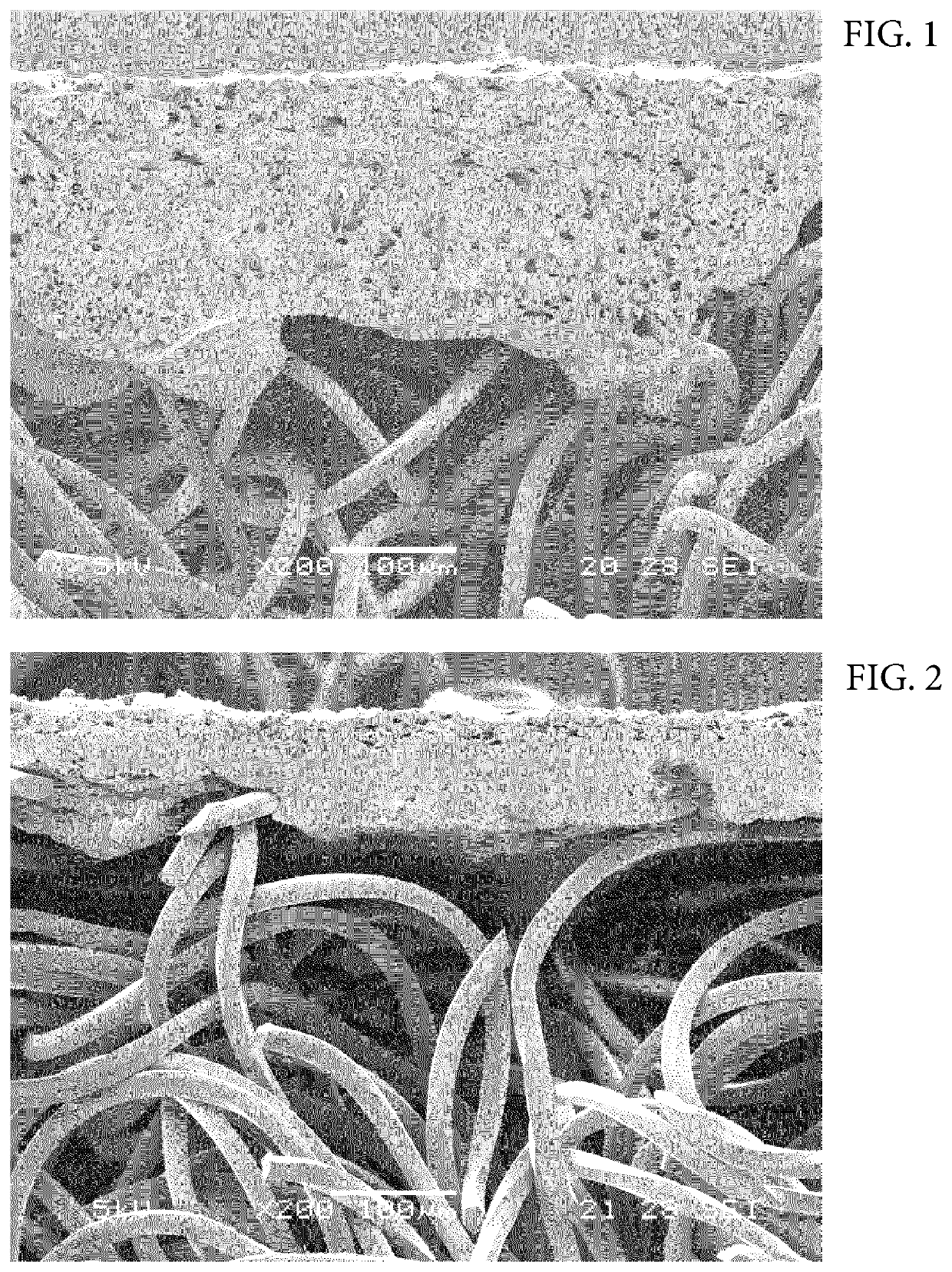Method for manufacturing gloves
- Summary
- Abstract
- Description
- Claims
- Application Information
AI Technical Summary
Benefits of technology
Problems solved by technology
Method used
Image
Examples
preparation example 1
Preparation of Aqueous Urethane Resin Composition (X-1)
[0072]In a nitrogen-flushed reaction vessel equipped with a thermometer, nitrogen gas, an inlet, and a stirrer, a reaction was allowed to occur at 70° C. in the presence of 500 parts by mass of polytetramethylene ether glycol (number average molecular weight; 2,000), 25 parts by mass of 2,2′-dimethylol propionic acid (hereinbelow, abbreviated as “DMPA”), 128 parts by mass of dicyclohexylmethane diisocyanate (hereinbelow, abbreviated as “H12MDI”), and 620 parts by mass of methyl ethyl ketone until the reaction product reaches the required NCO % so that a methyl ethyl ketone solution of a urethane prepolymer having an isocyanate group at the terminal thereof was obtained.
[0073]Subsequently, to an organic solvent solution of the urethane prepolymer, 23 parts by mass of triethylamine was added as a neutralizing agent followed by stirring, and, by further adding 830 parts by mass of water followed by stirring, an emulsion having the ...
preparation example 2
Preparation of Aqueous Urethane Resin Composition (X-2)
[0075]In a nitrogen-flushed reaction vessel equipped with a thermometer, nitrogen gas, an inlet, and a stirrer, a reaction was allowed to occur at 70° C. in the presence of 250 parts by mass of polycarbonate diol (“ETERNACOLL UH-200” manufactured by Ube Industries, Ltd., number average molecular weight; 2,000), 18 parts by mass of DMPA, 90 parts by mass of H12MDI, and 236 parts by mass of methyl ethyl ketone until the reaction product reaches the required NCO % so that a methyl ethyl ketone solution of a urethane prepolymer having an isocyanate group at the terminal thereof was obtained.
[0076]Subsequently, to an organic solvent solution of the urethane prepolymer, 16 parts by mass of triethylamine was added as a neutralizing agent followed by stirring, and, by further adding 797 parts by mass of water followed by stirring, an emulsion having the urethane prepolymer dispersed in water was obtained.
[0077]The obtained emulsion was ...
preparation example 3
Preparation of Aqueous Polyurethane Composition (X-3)
[0078]To a nitrogen-flushed reaction vessel equipped with a thermometer, nitrogen gas, an inlet, and a stirrer, 155 parts by mass of 1,6-hexane diol (hereinbelow, abbreviated as “HG”), 137 parts by mass of neopentyl glycol, and 424 parts by mass of adipic acid were added, and the mixture was melt at 120° C. Subsequently, under stirring, the temperature was raised to 220° C. over 3 hours to 4 hours and then maintained for 5 hours. After cooling to 150° C., 88 parts by mass of DMPA was added and, after keeping the resultant for 5 hours to 10 hours under stirring at 150° C., by adding 300 parts by mass of methyl ethyl ketone thereto, a methyl ethyl ketone solution of polyester polyol with a carboxyl group (X-3-a) having the non-volatile content of 70% by mass was prepared.
[0079]In a nitrogen-flushed reaction vessel equipped with a thermometer, nitrogen gas, an inlet, and a stirrer, a reaction was allowed to occur at 70° C. in the pre...
PUM
| Property | Measurement | Unit |
|---|---|---|
| Percent by mass | aaaaa | aaaaa |
| Percent by mass | aaaaa | aaaaa |
| Molality | aaaaa | aaaaa |
Abstract
Description
Claims
Application Information
 Login to View More
Login to View More - R&D
- Intellectual Property
- Life Sciences
- Materials
- Tech Scout
- Unparalleled Data Quality
- Higher Quality Content
- 60% Fewer Hallucinations
Browse by: Latest US Patents, China's latest patents, Technical Efficacy Thesaurus, Application Domain, Technology Topic, Popular Technical Reports.
© 2025 PatSnap. All rights reserved.Legal|Privacy policy|Modern Slavery Act Transparency Statement|Sitemap|About US| Contact US: help@patsnap.com

